-
Posts
809 -
Joined
-
Last visited
Content Type
Profiles
Forums
Blogs
Gallery
Events
Store
Posts posted by Yankee
-
-
The EKO's post-1915 were made in gilt bronze, and the hallmark of bronze is an asterisk.....but, why some of these eko have this mark and others not?
Maybe, only have the asterisk the 1916-18 issues and the post- war issues not? or maybe that some manufacturers did not put the asterisk?
Hi Palencia
Always my belief that all WWI bronze gilt examples should have the asterisk no matter who the manufacturer was. After the war they were to be exchanged ( only with asterisk ) for a gold one. Since the Austrians were defeated it was no longer possible. The examples found without the asterisk were post war replacement or copies. If I stand to be corrected than my apologies. Good collecting.
0 -
Tim B's remark on a thread for copies is a wonderful idea, I suspect there are enough good quality fakes to flood any capital city. Just saw a dangerous
 copy of an early type St.Stephen Knight in gold being auctioned by Rauch. The only thing I found wrong was the reverse center wreath being not hand painted. Perhaps in the hand there would be other issues that would cause concern. One needs a very strong stomach and an excellent library collecting rare A-H awards.0
copy of an early type St.Stephen Knight in gold being auctioned by Rauch. The only thing I found wrong was the reverse center wreath being not hand painted. Perhaps in the hand there would be other issues that would cause concern. One needs a very strong stomach and an excellent library collecting rare A-H awards.0 -
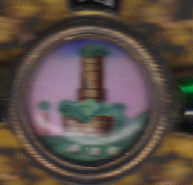 Artist had
Artist had  tropical sunset in mind.
0
tropical sunset in mind.
0 -
Hi Pavel
Solid silver issued examples is exactly what I meant to say. It would be logical to think that war time issued pieces would only be silver-plated, zinc & etc. As you kindly pointed out this was not the case. I did not notice any silver hallmarks on the example to the airship officer. Any idea how many were awarded in the non solid silver. I have never noticed a seller describing the metal content for these medals. Perhaps they are in the dark like me or the values are nearly the same and not worth to mention the fact.
Hi Tim
I think it would be nearly impossible to identify the recipient. The Austrians for the most part only engraved the unit, never a name. A friend has one inscribed to the
 GENERAL STAFF and I do not recall an actual name or date being present. There would have been dozens assigned to that post. Perhaps in the Vienna archives there is a list of names for all staff positions. It was popular with the Austro/Hungarians to decorate their award cases and sometimes a dedication would be placed but not on the medal itself. So a
GENERAL STAFF and I do not recall an actual name or date being present. There would have been dozens assigned to that post. Perhaps in the Vienna archives there is a list of names for all staff positions. It was popular with the Austro/Hungarians to decorate their award cases and sometimes a dedication would be placed but not on the medal itself. So a  case could be more sought after than the medal.
case could be more sought after than the medal.Sincerely
Brian
0 -
Hi Gentlemen
In fact I also thought it was a bit odd to have swds on one ribbon & not the other. I had always assumed it was a pair. If they were not given to the same officr then it would explain why there are no swds on the other bravery ribbon. The swds are not so well secured to the ribbon and it could be a possibility that at one time the swds had been placed and over time just fell off or the ribbon had just been replaced. As far as I know all Signum Laudis medals were issued without an inscription on the rim. It would be the friends of the recipient to take it upon themselves to present such a nice gesture. Exactly what makes British medals so much fun to collect is that you can always be sure of a name.
I was told by another collector that their are fake
 inscribed Signum Laudis medals out there so be careful... I was told by another collector that there are solid siver Signum Laudis examples but not sure when they would have been awarded.
inscribed Signum Laudis medals out there so be careful... I was told by another collector that there are solid siver Signum Laudis examples but not sure when they would have been awarded.Sincerely
Yankee
0 -
-
Silver Cross of the Dannebrog Order from the time of Christian IX.
Given as a further award for those who already had the Order itself and can also be awarded as an independent decoration. This would explain why so many prominent military and civil servents are seen sporting the Silver Cross.
0 -
Hello Brian,
Great thanks for the two photographs : this medal is definitely genuine for me ( the attribution is quite odd but the AVM attributed to BOURRIE is also atypical, with the two bars and the mention '' AU '' 72E DE LIGNE in spite of 72E DE LIGNE without "AU'' ; (I have only seen such an attribution to the 1er régiment étranger - and the unique medal to the 63ème de ligne).
A little correction : Tuillier has not left his regiment to subscribe an engagement in the foreign legion : he was simply transferred to this unit just as any other infantry regiment ; also, among the French expeditionary corps in Mexico (at the difference from Belgian and Austrians), only NCO and troopers received the silver military merit medal. Commissioned officers were awarded with ND Guadalupe (and Eagle) except five French officers who received the bronze Al Merito Militar, corresponding to an imperial mention.
(I don't know about German fakes, but, alas, the fakes in AVM are numerous! )

Regards
Michel.
Hi Michel
Many thanks for kindly correcting me, always appreciate learning something new every day.
As I understand in the Legion most of the soldiers were foreigners and usually the officers would be French. Because this was a crack regiment I suppose an officer's transfer into the unit would be an honor especially if he was assigned. I was thinking he volunteered for the Mexican adventure since a good many were in need for the service of Maximilian
 Shocked
Shocked  to learn the Legion suffered nearly two thousand casualties in the Mexican campaign. Those Mexican Eagle orders are super scarce unfortunately
to learn the Legion suffered nearly two thousand casualties in the Mexican campaign. Those Mexican Eagle orders are super scarce unfortunately  there are some later made pieces that you have to watch out for.
there are some later made pieces that you have to watch out for. Sincerely
Brian
0 -
Unfortunately, this cross is not mine...





For the moment...


That is one you can't easily forget. Certainly worth pursuing. Good luck :cheers:
0 -
Hello !
So early XVIII century ?
A 1st class knight cross ?

First quarter 19th century. It is a knight 1st class. Very rare & fantastic condition considering the age. Great find

Yankee
0 -
-
-
Hello,
Difficult to give an opinion on this medal with this ''soft-focus effect'' that prevents me from reading the attribution.
I had, quite recently, a glance on a corresponding AVM (this piece?), offered on auction on the net, with the very unusual mention of two units : a guard regiment and a line infantry : I had (rapidly) considered it as a - bad and absurd - fake - and I go away.
I was wrong !!! (more often than not).
The mention of the ''3EB (?) GRENRS'' is not the 3rd grenadiers regiment of the imperial guard : this refers to elite troopers in the bosom of the 72nd regiment, named grenadiers and voltigeurs - (other ordinary troopers are named ''fusiliers'').
I see your medal as authentic on account of ... the upper and the lower bars that frame the engraved attribution on the reverse !
Just because I have an AVM attributed to : / ______ / BOURRIE / SERG T MAJOR / AU / 72E DE LIGNE / ______ / with the same two bars.

(Mention of ''MONSIEUR'' TUILLIER is nevertheless surprising).
A better photograph and a glance on the obverse will be welcomed).
Laurent Tuillier was born September 7th 1829 at Narp (now in Pyrénées Atlantique), and was commissioned ''sous-lieutenant'' August 12th 1857, aged 28. (He was evidently a NCO before, but I have no information on him).
He was awarded the AVM at the occasion of the Italian campaign 1859, in the 72th regiment (total for this regiment : 119 AVM).
He was promoted lieutenant on September 8th 1861, and I have found him in the ''Foreign Legion'' (Régiment Etranger) in 1864. He was in Mexico and was awarded with the knight of ND Guadaloupe under Maximilian (award accepted July 4th 1866).
Promoted captain April 5th 1865, and awarded knight of the Légion d'honneur before 1866. In 1866 he was transferred in the 2nd régiment de tirailleurs algériens in Mostaganem (Algeria). Chef de bataillon October 10th 1871. Officier LH.
That's all I know about him.
Regards.
Michel
Hi Michel
The research you had provided me on Laurent Tuillier is just a fantastic wealth of info
 What an amazing career he had, being present at key areas of conflict during that tumultuous time in history. Fascinating that he joined the Foreign Legion to fight in Mexico especially coming from a line regiment. Or was that a common practice to take leave of absence from the regular army & make an adventure to Mexico and join the Legion? He certainly was a very brave man.
What an amazing career he had, being present at key areas of conflict during that tumultuous time in history. Fascinating that he joined the Foreign Legion to fight in Mexico especially coming from a line regiment. Or was that a common practice to take leave of absence from the regular army & make an adventure to Mexico and join the Legion? He certainly was a very brave man. I also thought it a bit unusual to have Monsieur addressed, suppose one of the reasons why I liked the medal it made it a bit more personal. There were some nice AVM's to be sure, this was the only one I noticed inscribed on a Batalion level which I thought most interesting. Perhaps he was very proud of being in the Grenadiers, since their was only one to each regiment & made a personal request to the jeweler to be included. I too at first was thinking of the Guards when I saw GREN RS but then was informed it was short for Grenadiers. Also noticed the line above and below the inscription,
 great you have one also to the same regiment. Interesting that engraver's trademark for the 72 regiment are the two bars....
great you have one also to the same regiment. Interesting that engraver's trademark for the 72 regiment are the two bars.... Thanks for describing the other awards he had received. Any chance that he might have also received the Emperor Maximilian Military Merit Medal? Or the answer for that would be either in Mexico City or Vienna State Archives.
The reason why I like AVM's are the lack of fakes out there compared to German States or am I wrong and need to be really careful with elite units & just how good are the fakes? Are the forgers using real blank AVM's or are the AVM's cast & electro plate copies? The piece did come from a fine auction firm that can be viewed over the net. Maybe this is the same piece I don't know there are two inscriptions one on the Bat level for GREN other Reg level. Thanks for confirming that MR Tuillier was with the 72nd. Ahhh you must have an amazing research library. Again appreciate your time & helpfulness.
Most Sincerely
Brian
0 -
Hello Yankee,
congratulation for your very nice medal,
Tuillier was "sous-lieutenant" (junior lieutenant in english? it is the rank before lieutenant and capitaine in the french army) in the "72e régiment d'infanterie de ligne" (72th line regiment infantry)
here you will can find a topic on the 72e régiment d'infanterie de ligne
http://fr.wikipedia....nterie_de_ligne
the 72nd lost 25 officers and 626 NCOs and soldiers during the campaign of Italia in 1859.
The 72e was in Algerie between 1854 and 1859, after, he came in Italia in 1859 to participate at the battle of Solferino.
The soldiers of the 72e come from Picardie (a nice country of France
 ),
),A 72e régiment d'infanterie de marine exist also, but it is not the same unit (naval infantry)
bye,
bonne soirée,
André
PS: a short history of the french infantry regiments,
http://www.military-photos.com/histori5.htm
(sorry it is in french)
Hi Andre
Please disregard my questions on rank, your explaination was fine, I just didn't think clearly. Thats what happens not having enough sleep & trying to do to many things at once

Sincerely
Brian
0 -
Hello Yankee,
congratulation for your very nice medal,
Tuillier was "sous-lieutenant" (junior lieutenant in english? it is the rank before lieutenant and capitaine in the french army) in the "72e régiment d'infanterie de ligne" (72th line regiment infantry)
here you will can find a topic on the 72e régiment d'infanterie de ligne
http://fr.wikipedia....nterie_de_ligne
the 72nd lost 25 officers and 626 NCOs and soldiers during the campaign of Italia in 1859.
The 72e was in Algerie between 1854 and 1859, after, he came in Italia in 1859 to participate at the battle of Solferino.
The soldiers of the 72e come from Picardie (a nice country of France
 ),
),A 72e régiment d'infanterie de marine exist also, but it is not the same unit (naval infantry)
bye,
bonne soirée,
André
PS: a short history of the french infantry regiments,
http://www.military-photos.com/histori5.htm
(sorry it is in french)
Hi Andre
Thanks for informing me which battle he ( regiment ) participated in to receive his AVM. Glade you made me aware that Tuillier was his rank and not his name.
 I had just assumed that was his last name since MR was addressed in front. On the second line thinking LAURENT was his first name. So it turns out that LAURENT is his last name. His rank Tuillier & S.Lieutenant is both inscribed on the reverse which is a bit confusing or is that normal practice? Thanks for directing me to the sites. Took the wrong second language in school.
I had just assumed that was his last name since MR was addressed in front. On the second line thinking LAURENT was his first name. So it turns out that LAURENT is his last name. His rank Tuillier & S.Lieutenant is both inscribed on the reverse which is a bit confusing or is that normal practice? Thanks for directing me to the sites. Took the wrong second language in school.Sincerely
Brian
0 -
-
Since many nice pictures of al Valore Militare medals for the Italian 2nd War of Independence (1859) circulate on the forum, I thought it would be interesting to add this one: it is an unusual engraving, with "Armata d'Italia 1859" instead of the usual "Guerre d'Italie 1859". I have the recipient's history from French archives, a very interesting career, I must say; the medal has been in my collection for more than 20 years and comes from a reputed dealer; type is F.G., engraving is correct, identical to many other 1859 specimens of my collection and I have no reason to doubt about its originality.
This engraving confirms what was said on the forum, i. e. that no attributions (and thus, engravings) were made in Torino where the medal was struck, but it was rather left to French regiments to decide on the attributions, and engrave the medal. In this respect, I have an interesting document of that period, providing the guidelines of engraving. If interested, I can scan it and put it on the forum. It would be interesting to create a set of specimens, for appreciating different engraving styles. I know of at least four different styles.
Hi Alvalmil
If not too much trouble I'd be fascinated to see your document on guidelines of engraving. I have noticed several styles of engraving all in capital letters. Some are large well executed in style scratching just slightly below the surface & some the letters are engraved more deeply. I noticed the 1859 War AVM's given to the Italians can be in CAPITAL letters or in SCRIPT. Were both styles engraved by the regiments or were some done privately? I don't know if the Italians received a blank reverse and it was up to the recipients themselves to have a dedication on the reverse. On some you will find two or three words & others filling the whole reverse with a short description of their act of bravery. I see lots of early AVM's with no inscription & then on others one notices all sorts of wonderful examples of calligraphy reason why I'm thinking it was up to the soldiers to decide in placing an inscription or not. I see collecting these can be complex but certainly rewarding. Does one have to worry about fakes? As a beginner it would be more prudent to focus on one period. Thanks for posting scans, your examples are super.
Sincerely
Yankee
0 -
-
Hi Magician Either pre WWI before the Airservice was called "Luftfahrt" or awarded for the Zeppelin division sometime between 1914-16. I'm not 100% certain on this however. I would think both medals would be awarded to the same guy since the inscription is exact.
 0
0 -
Hello Yankee,
As I recall, there were three pieces. I am sure that one was a Red Eagle 2nd class with swords and oakleaves and swords star.
The repair was to the white enamel on the arms - it is flawless. Unfortunately, I can not remember what the other pieces were,
but if I do, I will certainly let you know.
Best wishes,
Wild Card
Thanks Wild Card. If they are still in that business & have somebody who can do blue color enamel repairs will let members know. Unfortunately this is beyond a touch up with a do it yourself enamel kit ( internet ) but probably all the old enamel would have to be removed and start again.
Sincerely
Yankee
0 -
Dear Gentleman
Two Signum Laudis with the same inscription to an airship officer. Small capital letters engraved along the edge, "SEINAM KAMERADEN DAS OFFIZIERSKORPS DER LUFTSCHIFFERABTEILUNG"

 0
0 -
Gentlemen,
About twenty years ago, I had some extensive enamel repair work done on a couple of pieces by, or through, Spink’s in London.
The results were extraordinary. As I said, this was about twenty years ago, so I do not know what their capabilities are today, but
it might be worth investigating.
Regards,
Wild Card
Thanks for the tip
 . What color enamel did they repair? I suspect living in a high humidity environment does not help such delicate enamel work. Perhaps a climate controlled room might be an answer. More flakes after this three year old foto taken. I seldom hold it just comes off
. What color enamel did they repair? I suspect living in a high humidity environment does not help such delicate enamel work. Perhaps a climate controlled room might be an answer. More flakes after this three year old foto taken. I seldom hold it just comes off  on its own.
on its own.Sincerely
Yankee
0 -
I have never met someone who can do this work anymore. Let it like it is, the chance to ruin the item is extremely high. Most pieces are like yours is due to the thin enamel.
Will do certainly don't want to make it worse. I've seen excellent white enamel restoration jobs but blue enamel I understand has some dangerous ingredients which perhaps is the reason restoration experts shy away. Thanks
Sincerely
Yankee
0 -
Greetings
An old Eduard Quellhost knight 2nd class, that has been around the mill. Anybody know of a fine jeweler who can restore this type of enamel work. Alternative is to do nothing and let the piece disintegrate to a skeleton.
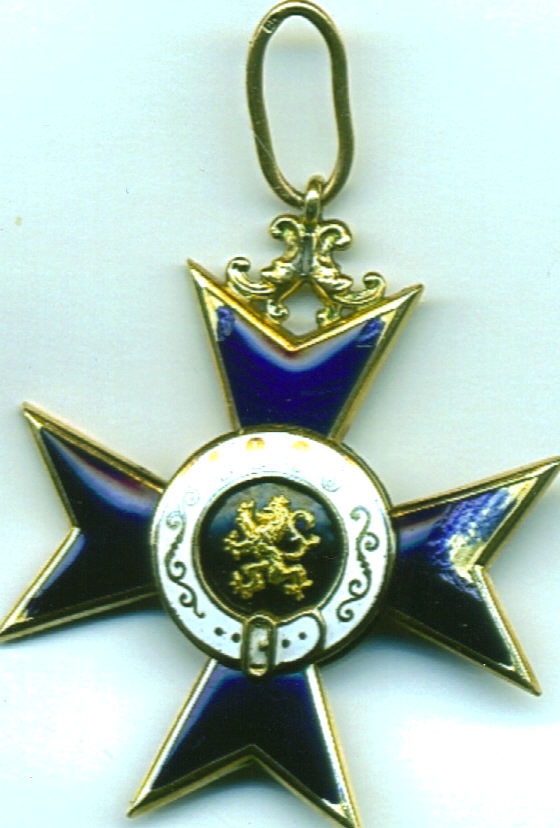 0
0




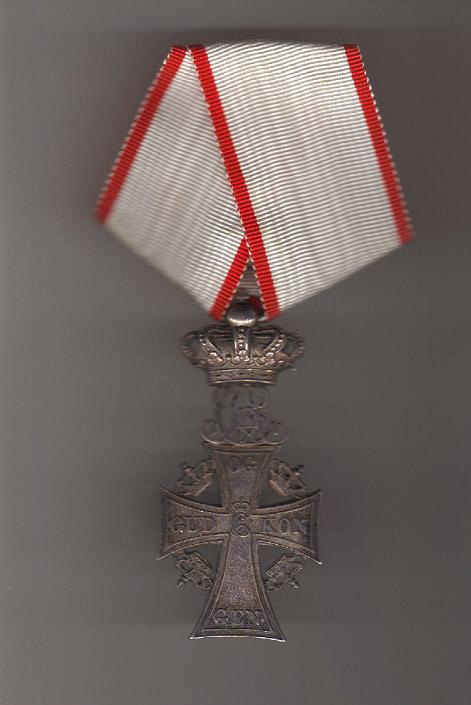
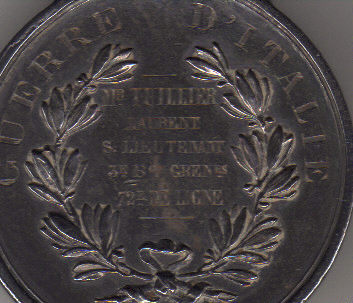
 As requested
As requested
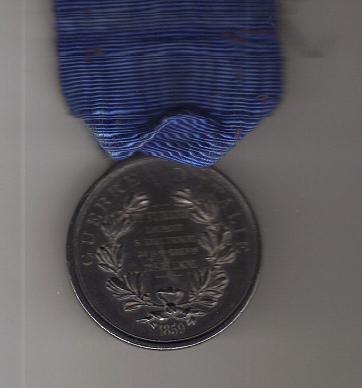
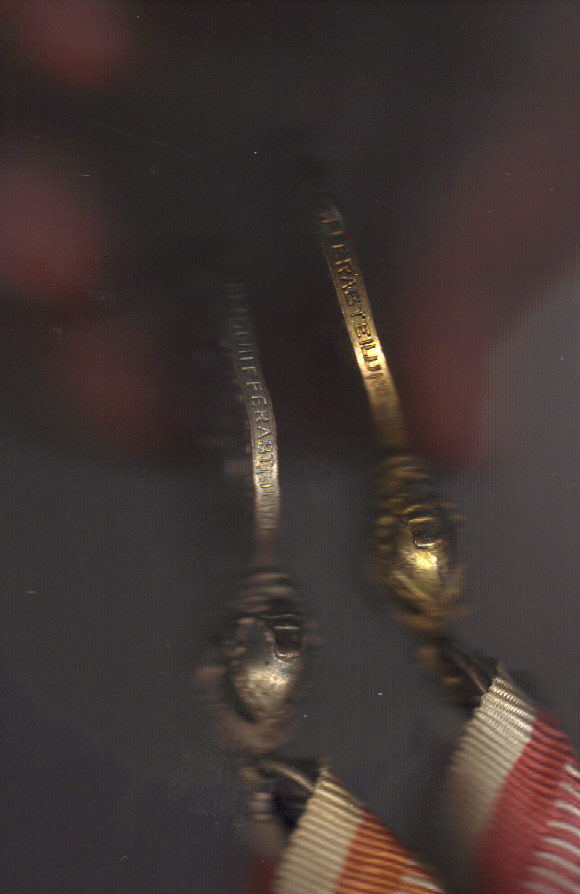
Iron crown order
in Austro-Hungarian Empire
Posted
Hi Palencia
Glade to have been of some help. Always a good sign when the iron is inserted under the crown . Your badge looks to be gold, either way a very nice example.
. Your badge looks to be gold, either way a very nice example.